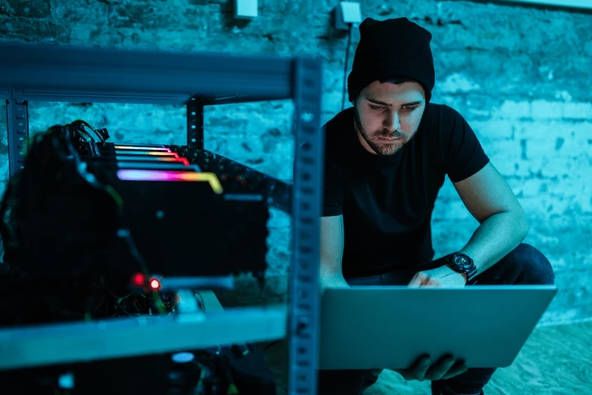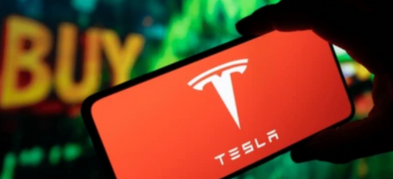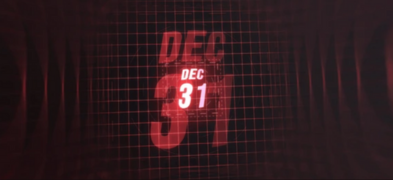
Ultima Markets App
Trade Anytime, Anywhere
Important Information
This website is managed by Ultima Markets’ international entities, and it’s important to emphasise that they are not subject to regulation by the FCA in the UK. Therefore, you must understand that you will not have the FCA’s protection when investing through this website – for example:
- You will not be guaranteed Negative Balance Protection
- You will not be protected by FCA’s leverage restrictions
- You will not have the right to settle disputes via the Financial Ombudsman Service (FOS)
- You will not be protected by Financial Services Compensation Scheme (FSCS)
- Any monies deposited will not be afforded the protection required under the FCA Client Assets Sourcebook. The level of protection for your funds will be determined by the regulations of the relevant local regulator.
Note: Ultima Markets is currently developing a dedicated website for UK clients and expects to onboard UK clients under FCA regulations in 2026.
If you would like to proceed and visit this website, you acknowledge and confirm the following:
- 1.The website is owned by Ultima Markets’ international entities and not by Ultima Markets UK Ltd, which is regulated by the FCA.
- 2.Ultima Markets Limited, or any of the Ultima Markets international entities, are neither based in the UK nor licensed by the FCA.
- 3.You are accessing the website at your own initiative and have not been solicited by Ultima Markets Limited in any way.
- 4.Investing through this website does not grant you the protections provided by the FCA.
- 5.Should you choose to invest through this website or with any of the international Ultima Markets entities, you will be subject to the rules and regulations of the relevant international regulatory authorities, not the FCA.
Ultima Markets wants to make it clear that we are duly licensed and authorised to offer the services and financial derivative products listed on our website. Individuals accessing this website and registering a trading account do so entirely of their own volition and without prior solicitation.
By confirming your decision to proceed with entering the website, you hereby affirm that this decision was solely initiated by you, and no solicitation has been made by any Ultima Markets entity.
I confirm my intention to proceed and enter this website Please direct me to the website operated by Ultima Markets , regulated by the FCA in the United KingdomA Guide on How Dark Pool Trading Works
Dark pool trading is a private way to match buy and sell orders without showing them on the public order book. It is widely used by institutions to reduce market impact while keeping prices anchored to quotes from lit markets.
In this article we will cover what dark pool trading means in practice, why traders use it, how the matching and post-trade reporting work, the rules that shape dark pool trading in Europe and the UK, and what retail investors should look for when their broker interacts with these venues.
What Are Dark Pools in Trading?
A dark pool is an Alternative Trading System where orders are hidden before execution. Large orders shown on a lit exchange can move the price against the trader. By routing to a dark venue, the trader hides intent until a match occurs.

Prices are still tied to the visible market because most fills use a reference such as the midpoint between the best bid and best offer.
That combination of anonymity before the fill and linkage to public quotes after the fill is the core value of dark pool trading.
How Dark Pool Trading Works
A portfolio manager decides to buy or sell size. A broker or algorithm slices the parent order into smaller pieces and sends them to eligible venues. Inside the pool, orders are pegged to a public reference price, most often the midpoint.
Traders can add minimum-quantity or conditional logic so they only interact when there is genuine size on the other side. When a match occurs, the trade is completed at the reference price and then reported through the official trade reporting channels.
The market does not see the order beforehand but it does see the completed trade shortly after.

Upsides and Downsides of Dark Pool Trading
| What You Get | What You Give Up | Why It Matters |
| Smaller market footprint on big orders | Less pre-trade transparency for everyone | Hidden intent reduces signalling and front-running risk |
| Midpoint price improvement inside the spread | Risk of information asymmetry or adverse selection | Matching at the mid can cut costs versus paying the full offer or hitting the bid |
| Extra liquidity when lit depth is thin | Uncertain fill rates across fragmented venues | You may still need lit markets for speed and certainty |
What “On the Tape” Means
Orders in dark pool trading stay hidden until they fill, but completed trades are still published. During normal reporting hours, US equity prints are sent to the tape within seconds.
If a trade occurs after the facility closes, it appears the next morning by the deadline. In Europe and the UK, real-time publication is also the default, and regulators allow specific deferrals for very large transactions.
Knowing that trades will appear on the tape soon after execution helps keep dark prices anchored to lit references and supports auditability for best execution.
Rules that Shape Dark Pool Trading in Europe and the UK
European markets allow dark pool trading under MiFIR, but they cap how much non-displayed activity can occur in any share to protect price discovery. The Double Volume Cap uses two thresholds. If trading in the dark exceeds 4 percent on a single venue or 8 percent across all venues over a rolling period, dark waivers for that instrument are suspended until activity normalises. This mechanism keeps most trading on lit order books while preserving the ability to execute size discreetly when needed.
The UK took a different path after Brexit. The Financial Conduct Authority does not automatically apply the European caps. Instead it uses a flexible, outcomes-based regime. The FCA can introduce caps or adjust transparency where necessary to maintain market integrity and execution quality. In practice the UK framework aims for the same balance. It keeps dark pool trading available for reducing market impact while ensuring that price formation remains anchored to visible quotes.
Market Context
Off-exchange activity in the United States often exceeds 40 percent of total equity volume and has peaked near 50 percent on busy days.
Canada sits closer to 7 percent. Off-exchange includes dark pools as well as wholesalers and internalisers, so it is broader than dark pools alone.
This context explains why debates about transparency and price discovery are more intense in markets where off-exchange activity is high.
A Simple Example to Illustrate
Imagine this situation: You need to buy one million shares without moving the market.
Your broker posts a conditional order with a minimum block size and a midpoint peg across several venues. Opposite interest appears at the same reference price. The pool crosses you in one or more blocks. The prints appear after execution, but your intentions were never broadcast to the public order book while you searched for size.
What Retail Traders Should Look For
Even if you never route orders yourself, dark pool trading can affect your fills through your broker’s smart order router. Read the best execution policy to see when and why your orders might be sent to non-displayed venues.
Review execution quality reports for midpoint improvement, fill rates, and a list of venues. Use limit orders when price control is critical. Smart routing helps, but a clear limit protects you against unwanted slippage.
FAQs
Is dark pool trading legal in the EU and UK
Yes. It is permitted with post-trade transparency and safeguards. Europe uses quantitative caps and the UK applies a flexible supervisory approach.
Do dark pools hide prices?
They hide orders before the trade. Completed trades are published within the regulatory timelines, so the market sees the prints.
Do dark pools harm price discovery?
If too much trading moves off the lit book, displayed quotes can suffer. Caps and reporting are designed to prevent that while still allowing large orders to reduce market impact.
Are dark pools only for giant blocks
Not always. Average trade sizes have fallen as algorithms slice orders, which is why minimum-quantity and conditional tools are common when traders seek genuine size.
Final Thoughts

Dark pool trading is a practical tool for executing size with a smaller footprint. Matching at a public reference price keeps fills fair. Post-trade publication keeps markets informed. In Europe the Double Volume Cap prevents non-displayed activity from overwhelming price discovery. In the UK a flexible regime targets the same outcome.
For individuals, choose brokers with clear execution reporting and use limit orders when price matters. For institutions, combine midpoint and conditional dark interaction with targeted lit liquidity to control impact and slippage.
Disclaimer: This content is provided for informational purposes only and does not constitute, and should not be construed as, financial, investment, or other professional advice. No statement or opinion contained here in should be considered a recommendation by Ultima Markets or the author regarding any specific investment product, strategy, or transaction. Readers are advised not to rely solely on this material when making investment decisions and should seek independent advice where appropriate.












